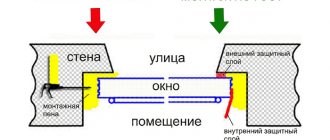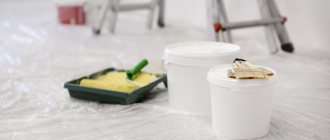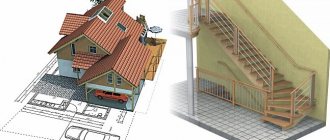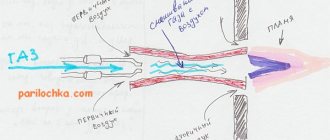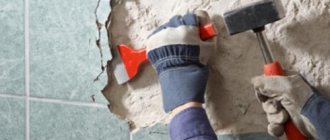What needs to be lubricated on a hammer drill?
Typically, maintenance of power tools is performed in the fall or spring, when a long vacation begins for the device or its preparation for the next season. To diagnose a power tool correctly, you must first figure out which parts on the hammer drill need to be lubricated. Structurally, a hammer drill is a complex device consisting of a number of the following elements:
- Body - the basis of the tool, inside which all the component parts are located
- An electric motor is the main unit that drives the tool’s executive element—the chuck. Motors in rotary hammers have a horizontal and vertical arrangement
- The piston system is an integral part of the gearbox, which is responsible for generating impact actions
- Chuck - has a special mechanism with quick fixation of working attachments
- A gearbox is a mechanism that transmits rotational movements from the electric motor shaft to the tool chuck. The design of the gearbox has a “drunk bearing”, which creates shock movements transmitted to the piston system
- A safety mechanism in the form of a clutch that limits the rotation of the chuck when the working attachment is jammed, thereby preventing overheating of the motor
- Working attachments are auxiliary elements that are installed in the design of the tool chuck
To imagine what a hammer drill consists of, below is a diagram of the structure of a power tool.
Knowing the design of the tool in question, you can figure out which parts of the hammer drill need lubrication. First of all, the rotary hammer requires lubrication of the gear unit, the main purpose of which is to regulate the rotation speed of the working nozzle fixed in the actuator (chuck). When the tool is operating, the gears experience high mechanical loads, which increases friction. Lack of lubricants leads to accelerated gear wear.
To increase the service life of the mechanism in question, you will need to regularly not only add lubricant to the gearbox design, but also first remove the remnants of old lubricants. Not many people know why obsolete hammer drill lubricant is removed. It must be removed in order to clean the metal particles and dust that are formed during the friction of the gears. If you do not clean out the old lubricant and apply new lubricants on top of it, then the effectiveness of such diagnostics will be zero.
The gearbox or transmission mechanism in the hammer drill is lubricated from the factory, but the lubricant must be changed every year with daily use of the unit. In addition to the gearbox, the tool also requires lubrication: the chuck and the seat of the installed attachment - the drill (tail part). From the factory, the cartridge (its internal part) is not lubricated, so the owner of the tool needs to worry about this if there is a desire to use the unit for a long time. In addition to the inside of the hammer drill chuck, the shank of the installed attachments also needs lubrication.
The design of the unit also includes plain bearings. They are also subject to heavy loads, so to increase their service life, when carrying out diagnostic procedures, it is necessary to add lubricants to the bearing structure.
Impact shaft assembly
First you need to lubricate the inside of the cylinder, pos. 32, and insert the hammer, pos. 30, into it.
All that remains is to put the lubricated barrel assembly, pos. 21, into place in the inner housing, pos. 49, putting it on the lubricated cylinder, pos. 32. As lubricants, it is recommended to use a special lubricant designed for Makita . Lubricants are available in several types: Makita P-08361 and Makita 183477-5 SDS-PLUS. Makita 183477-5 SDS-PLUS lubricant Makita lubricant is used for drill shanks .
Lubricants vary in color, but have exactly the same characteristics. What other lubricants are used in the Makita 2450 and 2470 hammer drills?
And here we have an assembled mechanical unit.
Now let's lubricate all parts of the mechanical unit with the recommended lubricant. Here is an example of how to properly apply lubricant to rotating surfaces. Here is another example of generous lubrication of a mechanical unit.
You can't spoil porridge with oil
This way it is also possible to apply lubricant. You can't spoil porridge with oil!
The lubricated mechanical unit must be covered with a black plastic case, pos. 14. Having placed the housing on top of the assembly, press down the housing until the assembly is completely fixed in it. Backwardness Insert four bolts, pos. 10, into the body and tighten. Now it’s time to attach the electric motor rotor to the mechanical part.
Rotor installation
The helical rotor gear is tightly inserted into the body of the mechanical unit and pressed.
It remains to insert four self-tapping screws m4x60 pos.57. and screw them into the electrical unit housing.
Sources:
https://sdelalremont.ru/sborka-perforatora-Makita-2450-i-2470.html
Why do you need to apply lubricant?
A rotary hammer is a mechanism that contains many moving parts that are subject to heavy loads. To understand why a hammer drill needs lubrication, let’s look at the purpose of lubricants. Lubricants are added to the design of the unit for the following purposes:
- Reduce friction. By reducing friction, the service life of parts increases, so it is necessary to lubricate almost all moving components and mechanisms, except for the internal part of the electric motor (rotor or armature rotating inside the stator)
- Increase heat dissipation or increase heat dissipation. When parts rub, they heat up, which lubricants are designed to combat.
- Protection of the mechanism from the penetration of dust and moisture from the outside, as well as retention of metal dust and particles that form during friction
The presence of lubricant not only reduces friction of parts, but also increases the efficiency of mechanisms. It is the frequency of maintenance that determines how long a hammer drill can last.
Lubricating the rotary hammer inside, how often should it be lubricated?
Most often it is necessary to lubricate the shanks of the attachments installed in the tool chuck. Moreover, these can be not only drills, but also other attachments - a lance, a chisel, a spatula. Before applying lubricant to the tail end of the tool, it will need to be wiped down initially to prevent small particles from getting into the inside of the tool chuck.
If you work with a hammer drill for a long time, then you need to lubricate the attachments every 3-4 hours of operation, which also depends on the type of work performed. Once a month you need to lubricate the cartridge structure. If you have to work with the unit every day for 10-12 hours, then you can lubricate the cartridge more often (once a week).
Depending on the frequency of use of the tool, the timing of the need for preventive measures differs. For example, if you use the device once a week or a month, then it makes no sense to disassemble it every year to add lubricant to the gearbox. With such rare use, lubricants can be added once every three years. If you use the device every day, then it is advisable to lubricate the gearbox and bearings at least once a year.
When answering the question of how often you need to lubricate a hammer drill, you should take into account the following factors:
- How often are power tools used?
- Read the instructions and find out how often the manufacturer recommends lubricating
- Warranty periods
Full recommendations on how often you need to apply lubricant for the hammer drill are indicated in the instructions. In any case, there is no need to add lubricants in the midst of construction work. You should wait until the end of the work or the arrival of cold weather, when the tool is used less often, and set aside one day for preventive maintenance.
How to lubricate the hammer drill gearbox and chuck correctly
Lubrication for the rotary hammer gearbox begins with the fact that you first need to disassemble the power tool to get to the device itself. You can start lubricating the gearbox immediately after the warranty period ends. To disassemble the device body, you will need to take the following tools and materials:
- Screwdriver Set
- Clean woven materials to remove old grease
- Gasoline or solvent
- Lubricant
When all the tools and materials are ready for work, you can begin to lubricate the hammer drill gearbox. Along with the gearbox, the tool chuck is also lubricated, since in order to remove the transmission mechanism, you will need to start the dismantling process from the actuator.
The sequence of lubricating the gearbox with disassembling the hammer drill is as follows:
- First, the body of the power tool must be cleaned of dust. This is necessary in order to prevent contaminants from entering the device.
- Prevention should begin with disassembling the cartridge. Using a screwdriver, remove the rubber and then the retaining ring (under the rubber).
- After this, remove the cartridge cover
- The pressure ring is removed
- The spring is removed along with the balls. The fixing part of the gearbox in the cartridge is disconnected, so we proceed to dismantling the transmission mechanism
- The tool body is disassembled. First, remove the rear part, which will allow you to disconnect the brush assembly from the electric motor commutator.
- After this, the front cover is removed
- The gearbox of the power tool is dismantled along with the shaft. To do this, the mode switch must be switched to the “jackhammer” mode. After this, the mode switch is removed, and then the gear unit is carefully removed
When the gearbox is removed from the body of the tool in question, we proceed to changing the lubricant, which is quite possible to do at home.
- You need to pour gasoline into a bowl-type container, then lower the mechanism and start washing it
- After thoroughly washing out the old grease, you need to wipe the device and let it dry. When washing with your own hands, you need to pay attention to the condition of the node. The presence of defects is unacceptable, therefore, if they are detected, you will need to either make a replacement or buy a new gearbox for the rotary hammer
- Using a lubricant (exclusively new), you should thoroughly lubricate the mechanism
- It is better to apply an exhaustive amount of lubricant than not enough.
- After this, you can begin assembling the mechanism
Assembly procedure for a Makita rotary hammer
The assembly of any mechanism should begin after careful preparation. It is necessary to prepare not only the parts, but also the tools, location, and lubricant.
Tools you can't do without pliers, screwdrivers, a hammer, and a brush for applying lubricant.
What is the assembly diagram for the Makita 2450 and 2470 rotary hammer?
Makita rotary hammer with your own hands can only be done if you follow the included instructions.
The task of the assembly process is to replace failed parts with suitable ones and ensure the interchangeability and operability of the tool.
Assembly of the gearbox assembly
The gearbox unit is mounted on the internal housing, pos. 49.
Inner housing
By the way, there are cases when the axles jump out of the internal aluminum housing. Both axles are pressed into the housing.
The assembled intermediate shaft is inserted into the housing, pos. 49, the rolling bearing arm of which must fit into the hole in the cylinder hinge. In this case, the rolling bearing lever, pos. 41, of the intermediate shaft must fit into the cylinder hinge, pos. 32, and the lower bearing of the intermediate shaft into the seat in the housing. This procedure is usually performed by rocking the structure until the parts completely fall into the indicated places.
READ How the Drill Feather Attachment Works Video
Assembling the intermediate shaft assembly
To assemble the intermediate shaft, you need to put the rolling bearing pos. 41 on the shaft pos. 40 with the teeth to the shaft splines, and put the coupling pos. 39 on the shaft splines.
Translation of translational motion
On the opposite side of the shaft, a helical gear 26 pos. 42, a flat washer 8 pos. 45, a bearing 608zz pos. 46 and a retaining ring 8 pos. 47 are put on. The intermediate shaft is assembled.
Impact mechanism assembly
How to assemble the impact mechanism of a Makita ? The impact mechanism is assembled from two units: a barrel shaft with a spur gear and an intermediate shaft with a rolling bearing. A). A spur gear, pos. 19, is put on the barrel, pos. 21, and pressed by a compression spring, pos. 18. To fix the spring, it is pressed with washer 30, pos. 17, and secured with retaining ring 28, pos. 16. B). To assemble the striker, you need to put ring 9, pos. 25, on the striker shaft, tighten the rubber ring, pos. 26, and press it with the metal ring, pos. 27.
Now we move to the opposite side of the barrel, pos. 21. On the other hand, the inner surface of the barrel must be lubricated with grease and the assembled firing pin, pos. 24, must be inserted inside.
Intermediate shaft and piston assembly
How to lubricate the chuck and drill bit of a hammer drill
The simplest action is to lubricate the tail part of the attachments installed in the structure of the power tool. The principle of applying lubricant to the shank of the drill and other attachments is as follows:
- To begin with, the shank of the nozzle must be wiped, removing dirt from the recesses, if any.
- Apply a suitable lubricant to the drill tail. To lubricate the working element, add the substance directly to the seat
- In order for the lubricant to reach all parts of the cartridge, it must be added until it begins to release from the mounting hole. To press it in, it is better to use a syringe with a thin tube.
- The substance on the drill shank should be thoroughly spread over the entire shank
At this point, the process of adding lubricants is considered complete, and it must be repeated as often as possible, which depends on the duration of operation of the unit.
How to lubricate the barrel perforator gearbox
The gearbox on a rotary hammer is the second largest component, the serviceability of which determines the effectiveness of the tool. Modern professional models of barrel perforators are equipped with special containers that are designed for adding lubricant. Special liquid oils are poured into these containers (crankcase), which envelop the transmission mechanism during operation.
To fill oil, there is a special hole in the housing design (usually in the upper part of the tool), the location of which is indicated by the manufacturer. The principle of changing gearbox oil in such devices is much simpler, and is based on the following steps:
- The lid is removed, depending on the manufacturer
- Remains of old lubricant are removed
- The crankcase is being purged or flushed with gasoline.
- New oil is refilled in the amount recommended by the manufacturer
- The cover is installed in place, and you can continue to use the tool.
Only the recommended oil should be poured into such hammer drills. Another advantage of such hammer drills is that they do not require you to wait until the warranty period expires in order to disassemble the body and apply lubricant. However, there is also a drawback to such devices, which is manifested in the following factors:
- Expensive
- The need to regularly monitor the amount of lubricant and top up and replace it
- It is not possible to lubricate the plain bearings at the same time, since to access them you will need to disassemble the housing
How to lubricate a rotary hammer gearbox or what are the requirements for lubricants
Many tool owners ask whether it is possible to lubricate the rotary hammer gearbox with conventional lubricants, such as Solidol or Litol-24. To answer this question, let’s look at the requirements for lubricants for rotary hammer gearboxes.
- Adhesion - and its value must be so high that an oil film is created under any type of load
- Resistance to moisture - you have to work with a hammer drill not only in dry and warm rooms, so their use in places with high humidity or in the cold contributes to the formation of moisture. Hammer drill lubricant must provide resistance to moisture penetration
- When water gets inside the instrument, it should not form an emulsion - the moisture should be repelled
- During operation, rubbing parts heat up to high temperatures, which often leads to dilution of lubricants. This is normal for all types of lubricants; only gear substances should restore their properties when cooled
- When the gears rotate, the lubricant should not be scattered over the inner surface of the housing, otherwise after an hour of working with the tool, the transmission unit will need to be re-lubricated
- Prevents the penetration of dust and small particles into the tool gears
- Possess anti-corrosion properties suitable for metals such as aluminum and alloy steel
Based on the above requirements, we can conclude that Litol and Solidol are far from the best options for lubricating the rotary hammer gearbox. For this tool, it is better to buy special lubricants that meet all of the above requirements. It is these lubricants that not only help to increase the service life of the transmission unit, but are also capable of providing reliable protection of the mechanism for a long time.
Causes of equipment overheating
If the hammer housing in the gearbox area constantly overheats, it is imperative to find the cause of the overheating and eliminate it. The most common causes of overheating are:
- Excessive gearbox lubrication. Excess must be removed.
- Lack of gearbox lubrication. Occurs during prolonged continuous use in chiselling mode. It is necessary to add a lubricant to the gearbox.
- Clogged air openings. In this case, air cooling stops working. It is necessary to clean the holes with a wooden stick or blow with compressed air.
In any case, you should stop working and let the mechanism cool down.
If the cause is eliminated, you must first let the device run idle or in drilling mode to allow the lubricant to be evenly distributed over the rubbing parts.
Lubricants for gearbox, chuck, drill and brushes
Now let’s figure out how to lubricate a rotary hammer, and what substances are best used for power tools. Lubricants are different, but they have one main purpose - to reduce friction. It is impossible to completely eliminate friction, but it is necessary to reduce its value in order to extend the service life of the entire tool. As the load on the gearbox increases, the engine begins to suffer, which also begins to operate in overload mode.
Lubricants for hammer drills come in the following types: synthetic, mineral and semi-synthetic. Each type of oil has its own advantages and disadvantages, so we will look in detail at what is best to use to lubricate the hammer drill components. It is recommended to use special gear oil for the gearbox. This is the kind of oil that needs to be poured into a special hole, which is found on modern professional hammer drills.
If there is no special hole for filling liquid oil, as on pistol hammer drills, then special plastic or viscous compounds are used for them. However, it is important to take into account that plastic compositions are used exclusively for metal parts and assemblies. If the design of the tool has plastic parts, then it is better to use silicone fluids for lubrication.
For drills and tool chucks, thick consistencies are used, which have a special designation indicating that they are intended for drills. If it is impossible to find such substances, then it is recommended to use graphite compounds. You can also use silicone lubricants in a thick consistency, which are also used to lubricate cartridges and drill shanks.
To lubricate bearings, it is recommended to use lubricants such as Solidol or Litol-24. The difference between them is that Litol is able to withstand much higher temperatures than Solidol, so of these options it is definitely better to give preference to Litol.
To lubricate the manifold assembly, it is recommended to use silicone lubricant in liquid form. It lubricates the brush assembly, which reduces not only friction, but also improves contact. The result will be noticeable immediately, as sparking will decrease and the service life of the brushes will increase.
Distinctive features and benefits of oils
● Metal-clad grease is a new generation of energy-saving, high-quality lubricants. ● Thanks to a high degree of alloying, including ultrafine powders of soft ductile metals, it has exceptionally high tribological characteristics and has an automatic wear compensation effect. ● Outperforms other lubricants under vibration and shock conditions. Tests have shown exceptionally high performance of the lubricant when used in drilling equipment. ● Excellent water resistance, anti-corrosion and conservation properties. ● The grease is frost-resistant with a wide temperature range of use from -55°C to +140°C, briefly up to +160°C.
| Name | Meaning |
| NLGI class | 2/3 |
| Dropping temperature, °C, not lower | 185 |
| Penetration at +25°C with stirring, mm-1, within | 250 — 295 |
| Colloidal stability, % extracted oil, no more | 10 |
| Change in volume of rubber grade 26-44 after aging in lubricant, %, no more | 8 |
| Corrosive effects on metals | withstands |
| Lubrication characteristics on a 4-ball friction machine at +20° | |
| — welding load (Рс), N | 3000 |
| — critical load (Pk), N | 800 |
| — scuffing index (Iz), N | 45 |
| Wear scar diameter at load 195 N, mm | 0,6 |
| Kinematic viscosity of light mineral oil at +40°C, cSt, within | 3,8 — 5,5 |
| Pour point of synthetic oil, °C, not higher | -55 |
Which manufacturers produce lubricant for hammer drills?
To choose the right lubricant for a hammer drill, you will need to pay attention to models that have a note stating that the mixture is intended for the gearbox of a power tool. You can then choose the appropriate consistency based on cost. However, expensive lubricants are not always good, since in most cases buyers have to overpay just for the brand.
When choosing, you can give preference to lubricants from manufacturers such as Bosch, Makita, Lubcon and AEG. When purchasing substances from these manufacturers, you also need to consider one important factor - compatibility with specific models of power tools. It is worth noting another type of lubricant, ULTRA-0 - a semi-liquid substance that, when heated, turns into a liquid state. This type of lubricant is suitable for crankcase sealed and non-sealed gearboxes.
Similar types of lubricants can also be used for other types of power tools, for example, drills, screwdrivers, jigsaws. Not only the service life of the tool, but also its performance depends on the quality of the preventive maintenance carried out. Working with a device that regularly undergoes cleaning, lubrication and replacement of failed parts is not only pleasant, but also convenient, since the owner can always be sure that the unit will not let you down. Take care of your instrument as you would take care of yourself, and it will serve you faithfully, even regardless of who its manufacturer is - China or Europe.
History of technology development
More than 150 years have passed since the hand-held hammer was first used back in 1851. It was manufactured for the needs of the mining industry and did not have the variety of modes that modern models now have. However, even then he significantly improved the work of workers. It is not without reason that this type of instrument has become widespread among craftsmen of various specializations.
Since that time, the instrument has undergone significant design changes. One thing remains unchanged - the need for proper care. The device of the hammer drill is quite complex. Some of its parts may wear out quickly.
To prevent this from happening, the lubricant for the hammer drill must have a number of qualities. With the development of the presented power tool, its additional materials were also improved. To understand how to choose a lubricant, it is necessary to consider the design features of the equipment.
Read with this
- How to choose a lubricant for an angle grinder gearbox?
- Bosch hammer drill disassembly instructions
- Bevel gear
- LPG gas reducer
- How to disassemble and replace a hammer drill cartridge
- Reducer or water pressure regulator in the water supply system for home and apartment
- Making a drilling rig with your own hands
- DIY winch: options and designs
- The door handle creaks: causes of the problem and solutions
- Making a stand for a drill with your own hands: instructions, drawings, video
How to lubricate a hammer drill
Different types of lubricants are used to lubricate the gearbox and the drill chuck.
Gearbox lubricant
A special lubricant is used here, which should be called gear lubricant. It can be under the brands under which the perfs themselves are produced - Makita, Bosch, AEG, etc.
But it can also be produced by a company that deals specifically with this type of product, for example, Ravenol, Shell, Xado, etc.
Some people use simple lithol or salidol for these purposes. But compared to special lubricating products, they dry out faster and do not eliminate friction as much as they should.
Lubricant for drills
Everything is exactly the same here. Special lubricants for this purpose are called “for drills”. And they are also usually produced by the same companies that make hammer drills.
In the absence of special lubricant, you can use graphite. But it does not remove heat from the shank so well, and this is important, since sometimes during prolonged operation the shank becomes flattened, which makes it difficult to remove later.
Lubricate the gearbox
You will need to disassemble the tool body. Follow the steps:
- Disassemble the cartridge. To do this, first remove the rubber ring.
Then use a screwdriver to pry up and remove the retaining ring.
Next, carefully remove the outer casing of the cartridge, and then remove the pressure ring, ball and spring. - Now disconnect the mode switch. This is done differently depending on the model. At the end of the article, I provided a number of links to videos that tell how it is filmed on one or another model. If your unit is not among them, then you can look at any similar one to understand the principle. And then, I think, it won’t be difficult for you to disconnect it yourself.
- Remove the commutator from the brushes. To do this, unscrew the back cover of the case and remove the brushes.
- Unscrew the screws that longitudinally tighten the housing and separate it.
- Remove the gearbox along with the motor armature.
Now thoroughly rinse the gearbox itself, as well as the inside of its housing. Washing can be done, for example, with gasoline.
After this, the individual most critical parts are smeared first.
And then the entire gearbox is completely enveloped in lubricant.
Well, all that remains is to assemble everything in reverse order.
Installing the mode switch lever
The mode switch is designed to move the clutch, pos. 39, to various positions and transmit translational motion to the shaft of the impact mechanism through the rolling bearing, pos. 41, to the cylinder, pos. 32.
Assembling the mode switch lever for a Makita 2450
On the axis of the inner housing you need to put the mode switch lever pos. 82 on top, press the pressure spring pos. 88 on top, and press it with a flat washer pos. 87. Install the locking ring pos.86. and fix it.
The retaining ring must be carefully secured. When turning the intermediate shaft, you must carefully check the correct operation and free movement of the cylinder in the housing. This must be done now so that it does not become clear at the end of assembly that the assembly was assembled incorrectly.
Lubricate the chuck and drill shank
This operation is very simple, so its description will be quite short.
Simply take the drilling fluid and add it directly to the chuck. Another option involves applying it to the shank and then installing it in the chuck socket. But no one forbids combining these two methods for reliability.
It is necessary to ensure that the lubricant is constantly present and add new one as necessary. If this procedure is neglected, the shank will overheat, which will lead either to its separation from the rest of the drill or to flattening. So don't be lazy and add.
That's all you need to know about the chuck and shank.
As promised, I am attaching at the end a link to a video with the switch disconnected:
This is all the information I have on the issue of lubrication of the hammer drill. I hope it was clear and accessible. With this I say goodbye - see you again!
Rotary hammers require careful care during use. For their long-term operation, different types of lubricants are used. The compositions can be mineral, semi-synthetic, and also synthetic. Mineral ones are made from petroleum products, so they quickly lose their operational features and have to be replaced quite often.
It is very important to choose a composition that will be suitable for the selected type of hammer drill.
What it is?
Lubricant is a viscous substance that reduces the coefficient of friction between tool parts. The operation of a rotary hammer is associated with a huge number of different rotational movements, which increases the degree of wear of structural elements.
When drilling, quite a lot of dust is released, which significantly impairs the operation of the device, which is why it requires periodic lubrication.
Which parts need lubrication?
In terms of its physical and technical parameters, lubricant for drills, piston, drills, as well as gearboxes and other elements is almost no different from lubricants of all other types. This is a rather viscous substance with an oily structure; it is used to reduce the friction force of rotating parts, thereby reducing wear on operating mechanisms.
Lubrication only reduces the wear of mechanisms, but does not eliminate it. But it is quite possible to significantly extend the period of their operation.
Over time, the lubricant becomes saturated with dust, which is formed during drilling, grinding and crushing - this leads to a change in the degree of its viscosity. In this situation, friction, on the contrary, increases and the wear rate increases, so the lubricant should be updated from time to time. In order for the hammer drill to last longer, you should clearly understand which parts can be lubricated and how often this should be done.
The device has a complex structure, including several complex units:
- housing with anti-vibration protection;
- horizontal or vertical electric motor;
- piston system;
- cartridge;
- gearbox in the form of a housing - it houses cylindrical bevel and worm gears;
- clutch required to stop rotation;
- working attachment (drill, as well as chisel, peak or spatula).
Almost all hammer drill mechanisms must be lubricated.
- Gearbox . This is the mechanism that is responsible for the rotation speed of the main working nozzle. It protects the parts located inside from dust and dirt, therefore it is equipped with a protective coating. During operation of the tool, its parts experience enormous loads due to the ever-increasing friction between them, which, in turn, leads to fairly rapid wear.
In most devices, the gearbox is initially biased, however, inexpensive products are most often lubricated with materials of very questionable quality, so they must be lubricated again immediately after purchase.
- Patron . In addition to the gearbox, you need to lubricate the cartridge, as well as the place where the replaceable attachments fit. The cartridge is initially dry, so after purchase you should lubricate the area in it that comes into contact with the tail part of the nozzle - this is where maximum friction occurs. If it is not reduced in a timely manner, the degree of wear increases sharply, which quickly leads to its damage.
- Tail nozzle . This part wears out under the influence of impact forces, which when heated increase its abrasion. The shanks must be lubricated each time they are installed, but before doing this, you need to wipe off the dust with a napkin and remove all dirt.
If the device operates in intensive mode, then you should visually control the amount of lubricant on the working nozzle.
Depending on the operating conditions, rotary hammers can operate in different modes - some use the tool every day, others only from time to time, so there is no clear answer about the frequency of lubricating the working parts of the tool. Typically, the operating instructions clearly state the procedure for lubricating parts.
It must be remembered that structural parts that are not listed in it do not need lubrication.
When making a decision to change the lubricant, we focus on the following points:
- frequency of use of the hammer drill;
- tips provided in the user manual;
- warranty service period.
Drill lubricant – sincere care for the tool!
Modern rotary hammers, depending on the class, can be used for drilling, drilling and chiseling even in hard materials such as concrete.
All of these modes, except for increased noise, during work lead to the release of a large amount of dust, small stone chips, etc. Such extreme conditions require frequent cleaning and lubrication of the device. Typically, two types of lubricant are recommended for work: lubricant for the rotary hammer gearbox and for the tips of drills, drills and other replaceable working attachments. In this case, a thinner oil is used to lubricate the gearbox.
For most models, the operating instructions indicate the timing and frequency of oil changes. Accordingly, the rotary hammer housing has special hatches and holes for filling oils, closed with sealed lids or screws.
As a rule, there are no problems with choosing the type of oil for high-quality rotary hammers from well-known manufacturers. The instructions indicate recommendations on what oil to pour into the hammer drill and in what quantity. But what if there is no such data? It is recommended to use oil for diesel engines.
By the way, in some Chinese rotary hammers, changing the factory oil, according to experts, led to an increase in impact efficiency, a decrease in gearbox heating, and even a decrease in operating noise. For some models of rotary hammers, both professional and amateur, the operating mode is also important. The peculiarities of their design during prolonged use of the chiselling mode, associated with increased vibration, lead to the cessation of the supply of lubricant to the working areas of mechanisms requiring lubrication.
At the same time, the instrument gets hotter. In order for the hammer drill oil to flow back into the specified areas, you need to periodically (every 20 minutes) switch to the drilling mode, thereby ensuring not only the lubrication of the rubbing parts, but also their cooling. Obviously, such mode changes will have a beneficial effect on the long-term performance of the hammer drill.
Knowing how to lubricate the rotary hammer gearbox, however, it is important to do this at regular intervals. How often should you change the oil, what should you follow and how to determine when it is time for a change? Experts recommend doing this with an eye to the instructions, but being guided by the practical side and, first of all, the intensity of use of the tool, the magnitude of the loads during the work, the conditions of its implementation (including dustiness)
Preventive replacement is recommended after replacing the motor brushes. Although an experienced technician will be able to determine the need for an oil change based on the sound and increased harshness of the instrument.
Before lubricating the hammer drill, you need to check whether the warranty period has expired. Because not all models have access to the gearbox housing in the form of a hatch or hole. And in this case, disassembling the case may be necessary. It is better to entrust it to the service center specialists. Especially if the tool is still under warranty.
When lubricating the gearbox yourself, you must first remove the old one. To do this, the crankcase is flushed with kerosene, diesel fuel or liquid machine oil (“spindle”). If you have to disassemble the case, the mechanism can be pre-blown to remove accumulated dust and dirt. Remember that after blowing and washing the mechanisms, you should lubricate everything that previously had lubrication (for example, a helical gear), and under no circumstances should you lubricate anything that did not have it (for example, a transmission coupling).
An approximate procedure includes preparing lubricants. As the latter, it is recommended to use lubricants from the hammer drill manufacturer, despite their higher cost. Perhaps, in the absence of a branded one, the most universal lubricant for a hammer drill is the well-known lithol.
Regarding the shanks of drills and other replaceable attachments, experts unanimously recommend covering them with a small amount (no more than a pea) of lubricant, for example, lithol or grease. This must be done each time before installation in the chuck.
After removing the attachment, the shank must be wiped clean to remove accumulated dust.
By the way, the choice of lubricant, especially for shanks, must be made with caution, avoiding oils that can cause sticking due to heating of the nozzle and jamming of the impact mechanism
Features of oil selection
One of the main parameters that is taken into account when purchasing a lubricant is the viscosity of the oil. High quality products are usually expensive, but in this case there is no need to save. A hammer drill is an expensive tool, so you should constantly take care of its performance. Typically, the types of lubricants are listed in the instructions, but if the information is missing, you can always seek advice from the manager of the service center or retail outlet where the device was purchased. Specialists will select the optimal composition for the hammer drill.
There are also universal compounds that can be used to lubricate different types of drills. In recent years , graphite lubricants have become very popular because they have good viscosity and a high level of quality.
Experienced specialists confirm that many branded mixtures are of much lower quality than mixtures made on the basis of graphite . In addition, they have a fairly affordable price, so many people confidently choose them.
For hammer drills, you should take substances such as grease and lithol . Litol - 25 is a high-quality, long-lasting material that has a low cost. Therefore, it is very popular among power tool owners.
Do not forget that such mixtures can cause slight braking of rotating structures, and can also significantly increase the heating of the tool during operation.
If we talk about specialized lubricants, it should be noted that to lubricate various parts you need to use oils that are suitable specifically for them. For example, oils that are used to process the gearbox are not suitable for lubricating drills.
And to lubricate the gearbox, a more liquid composition is required , which must completely cover the contacting parts, filling the free cavities. But if the gearbox has plastic parts, then the lubricant can only be silicone.
The transmission mechanism can also be lubricated with plastic compounds, but not all equipment can function without interruption when using products with a similar consistency.
Thicker mixtures are suitable to reduce tail tip wear. Usually the packaging indicates that they are intended for processing drills.
If you don’t have the necessary product at hand, you can opt for its graphite analogue, although it removes heat much worse than specialized oil.
For cartridges, you can use silicone lubricants . Lubricants are branded, produced by manufacturers of electrical tools, for example, Hitachi or Metabo, as well as AEG, Bosch or Interskol. They can also be produced by enterprises specializing in the production of lubricant mixtures.
The most popular brands are:
- Bosch - produces oils for lubricating gearboxes and tail attachments;
- Makita – purchased for drills;
- Lubcon Thermoplex – produces products for gearboxes;
- Turmogrease - universal lubricants;
- Nanotek - used for shanks;
- Interskol – optimal for processing drills;
- PRORAB - is a composition used for processing the seats of tail parts;
- Kress – used for lubrication and greasing of drills.
Bosch and Makita are in greatest demand among users.
Tips for choosing
Lubricants for gearboxes and bearings (for example, bevel bearings) have different properties. Bearing materials must have increased adhesion. It is necessary that the lubricant adheres firmly to the gear teeth during operation. The gearbox is lubricated by splashing.
Suspended lubricants form a kind of fog during operation. In addition to adhesion, there must be other qualities. For example, resistance to high temperatures of the lubricant is important. It should be able to withstand high temperatures without any problems and not melt at them.
There are several ways to reduce the frictional impact on the interacting elements of an angle grinder gearbox. The choice of how to lubricate friction units is made from the following options:
- the use of expensive special lubricants for gearboxes from well-known brands;
- the use of universal compounds suitable for any power tool;
- lubricating the gearbox with lithol or grease;
- use of self-made lubricant.
Application of special materials is the optimal solution. When choosing a lubricant for a gearbox, it is recommended to give preference to compounds produced under the same brand as the grinder itself. For example, if the machine is an AEG brand, then the lubricant must be purchased from the same brand.
When using specialized products, the service life of angle grinders increases significantly, since the manufacturer takes into account all the features and nuances of operating its own equipment. The disadvantage of using branded materials is their high cost, which can affect the family budget.
Specialists and service technicians recommend purchasing any budget, non-branded compound designed specifically for gearboxes. You can also use a lubricant used for CV joints, the joint of front-wheel drive vehicles that operate under significant loads. It can be purchased without any problems at any auto store. This option is much worse than using branded materials. This is due to the fact that the specifics of the operation of friction units of two different mechanisms are not taken into account.
The most unfavorable solution is the use of lithol or grease, since both of these materials are not designed to lubricate friction units that heat up to high temperatures. Some owners of grinders use only these compounds, which is why their machines cannot last the service life declared by the manufacturer. In an effort to benefit here and now, they do not take into account the future costs of purchasing a new tool or replacing expensive parts.
Brands and their characteristics
Tips on choosing a liquid will help you purchase a high-quality and suitable product. The peculiarity of foreign manufacturers is that they use ointments as the basis for their products. Such masses have a special development technology. All types of liquid have different markings. Combinations of letters and numbers encrypt certain characteristics.
For example, one of the most expensive imported ointments has the following characteristics:
- used for molybdenum;
- has the second class in viscous properties;
- ISO standards are preserved;
- German DIN standards were used during the development of the lubricant;
- belongs to type K.
You will have to pay dearly for a lubricant with such characteristics. It's called Makita. You can buy it in tubes. The advantage of the high price is the quality and duration of use. Therefore, cheaper lubricants are also available on the Russian market. High prices for lubricants from foreign manufacturers have increased interest in domestic products.
Russian liquids are suitable for different types of instruments and are not inferior in quality. Hammers, drills, gearboxes - they all have their own types of lubricants.
Lithium greases have good reviews. They repel water well and are also designed to work at different temperatures. Organic and inorganic components contribute to thickening.
Cyatim-203 is used for closed types of bearings. It is better not to lubricate other bearings.
There are also pigmented lubricants, they differ in color. There are blue and dark purple VNIINP greases. You will have to pay more for the first option than for the second. That's why they buy it less often. Although the quality of the product is quite good and worth the money spent.
How to properly lubricate parts?
When it comes to lubricating a hammer drill at home, as a rule, we mean replacing the lubricant on its individual parts yourself. First of all, you should lubricate the gearbox - this mechanism is quite easy to disassemble, but has a complex structure, so all actions must be carried out in a strictly defined order.
First you need to prepare the necessary materials:
- dry clean cloth - rags;
- plumbing tools that are necessary for assembling the gearbox;
- the lubricant itself.
In most cases, world-famous manufacturers such as Bosch and Makita indicate in the instruction manual the entire procedure for disassembling and assembling devices and provide important recommendations. Owners of rotary hammers who are faced with such work for the first time, following these tips, can master all the manipulations quite quickly, spending a minimum of effort.
But if such a guide is not at hand, then you should work according to a certain algorithm.
- The tool must be kept free of dust and dirt.
- When disassembling and subsequently reassembling a drill and hammer drill, you need to remember as accurately as possible the order of arrangement of all functional parts, so as not to confuse them during disassembly. It is better to use video recording.
- All work related to lubrication of parts is carried out only after a certain time after stopping the drill. It must cool down, otherwise the cooled lubricant can cause interruptions in the operation of the power tool if it comes into contact with hot areas.
- After all the basic parts are removed, including the gearbox, they are washed with spindle oil or gasoline, and then thoroughly dried from excess moisture. Particular attention should be paid to the gearbox.
- Each part of the device should be inspected as carefully as possible. In some areas there is no lubricant, which means that there is no need to apply a new compound to this place.
- After applying the composition, the gearbox is carefully reassembled in the reverse order. If this is done correctly, the hammer drill can be used immediately.
In addition to the gearbox, the drill should also be lubricated. In this case, the tail part of the mechanism, just as in the first case, is washed with gasoline, cleaned and dried, and only then carefully coated with specialized oils.
At the same time, it makes sense to treat the cartridge seal with your own hands ; this will significantly increase its service life and also protect it from dust. However, one should not lose sight of the fact that it is lubricated only when a system with an open type chuck is mounted on the hammer drill . If the system is closed, then there is no need for lubrication.
